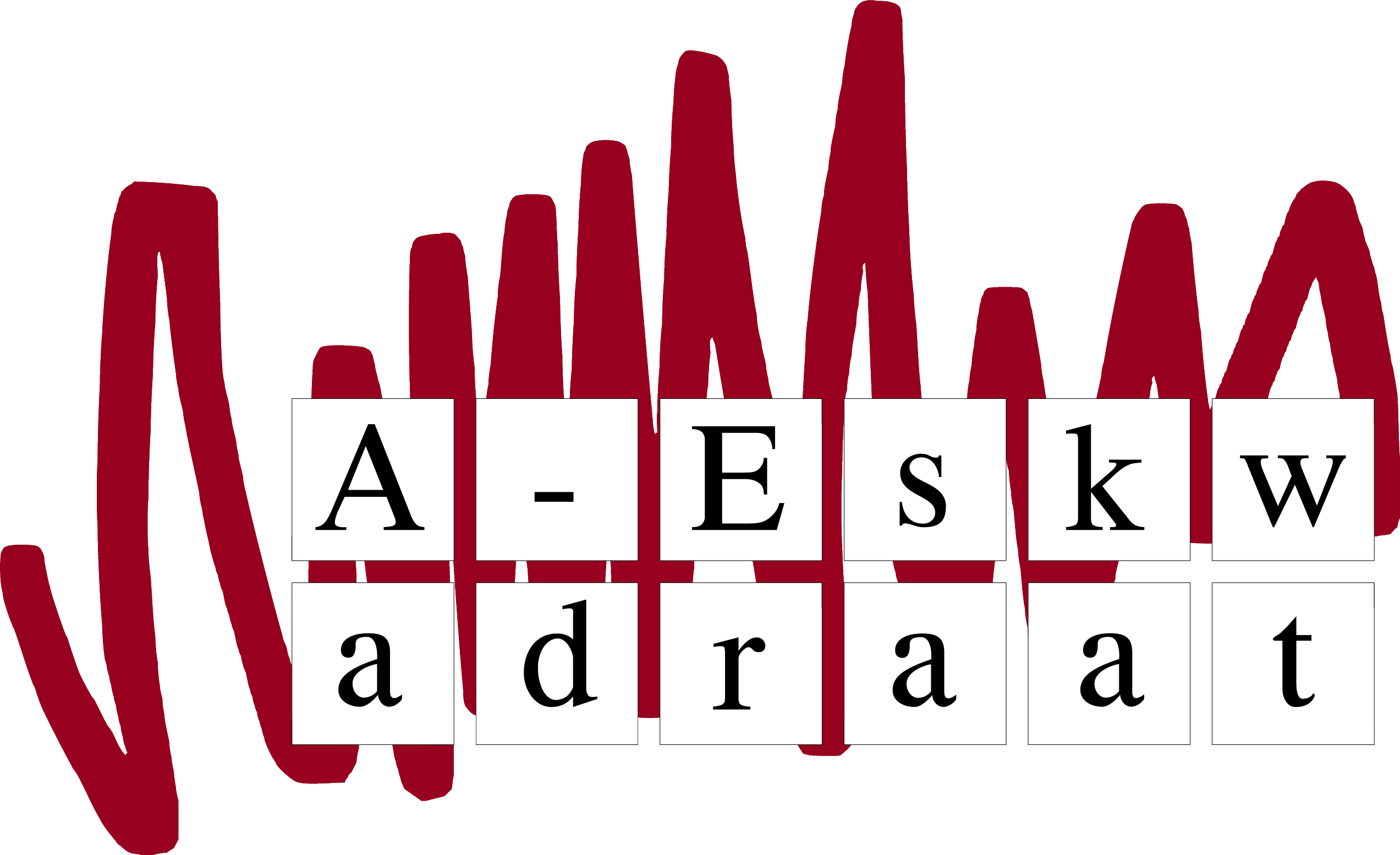Mathematics symposium

Divide and Conquer
On the 16th of January 2019 it is that time of year again, it's time for the annual A-Eskwadraat mathematics symposium! This year the theme is Divide and Conquer.
More information
On the 16th of January 2019 it is that time of year again, it's time for the annual A-Eskwadraat mathematics symposium! This year the theme is Divide and Conquer.
More informationBelow you can find the schedule of the symposium on the 16th of January 2019, note that it is recommended to be at the location 15 minutes prior to the first talk:
Time |
Talk |
|---|---|
13:30 t/m 14:15 |
Het kansrijke bewijsMarjan Sjerps |
14:30 t/m 15:15 |
Think globally, act locallyRaf Bocklandt |
15:30 t/m 16:15 |
Een virtuele reis door het binnenste van de aarde.Tristan van Leeuwen |
16:30 |
Drinks |
Tijd |
Lezing |
|---|---|
13:30 t/m 14:15 |
Discovering new geometry from physicsMartijn Kool |
14:30 t/m 15:15 |
Wijsbegeerte en Wiskunde: een geestig stelAlbert Visser |
15:30 t/m 16:15 |
Using algebraic topology in algebra and topologyJack Davies |
16:30 |
Drinks |
Divide and Conquer in geometry: Think globally, act locally
A tested technique in mathematics is to find solutions in a small neighbourhood and then glue them together to a global solution. Much of the machinery that reshaped geometry in the last 70 years is based on this principle and in this talk we will tell the story of this evolution and the mathematicians behind it.
Using algebraic topology in algebra and topology
We will explore a seemly innocent question: when does the real vector space R^n have a multiplicative structure? This will lead us to several examples and non-examples, a partial solution ` using linear algebra, and then a full solution using some powerful tools from algebraic topology. It is also possible to relate this solution to a question about the parallelisability of spheres from geometry.
Discovering new geometry from physics
Calculations in quantum theory use the Feynman path integral, which is notoriously ill-defined. Notwithstanding, in certain cases such path integrals can be understood purely geometrically, which leads to surprising applications. I will informally discuss two such applications. (1) Counting of curves on surfaces ---a topic of 19th century geometry. (2) Counting solutions to equations in supersymmetric quantum field theory.
Wijsbegeerte en Wiskunde: een geestig stel
Hoe verhouden Wijsbegeerte en Wiskunde zich tot elkaar? Komen zij voort uit de zelfde intelectuele bron? Kunnen Wijsbegeerte en Wiskunde iets van elkaar leren of kunnen ze maar beter gepaste afstand houden? Is er sprake van stimulerende wisselwerking of zien we juist 'Unheilvolle Einbruch' van de één in de ander? Wat voor positie heeft Grondslagen van de Wiskunde ten opzichte van zowel de Wijsbegeerte en de Wiskunde? Ik geef een scenic tour langs deze vragen vergezeld van enige achtergrondinformatie en enige bespiegelingen.
Het kansrijke bewijs
Een belangrijke taak van forensisch deskundigen is het interpreteren en evalueren van de onderzoeksresultaten, zoals DNA-profielen, vingerafdrukken, glasfragmenten, vezels, digitale informatie. De rol van de deskundige is het bepalen van de bewijskracht van die resultaten. Er is een algemeen toepasbare methode ontwikkeld die op basis van kansrekening die bewijskracht meet met een getal, de likelihood ratio (LR). Het toepassen van die methode in de praktijk geeft aanleiding tot veel, soms fundamentele, discussies. Ik zal het publiek een aantal wiskundig interessante discussiepunten voorleggen.
Een virtuele reis door het binnenste van de aarde.
Hoe ziet de aarde er van binnen uit? Wat zit er verstopt onder het oppervlak van Mars? In aardbevingsmetingen zit veel informatie verstopt, en met geavanceerde wiskundige simulaties en reconstructiemethoden kunnen we deze informatie achterhalen. Daarnaast vragen we ons af hoeveel metingen er nodig zijn om een unieke reconstructie te garanderen. In dit praatje geef ik een overzicht van de wiskunde die nodig is om aardbevingen te simuleren, reconstructies te doen en meer fundamentele vragen over uniciteit te beantwoorden.
The Minnaertbuilding hall 2.02, Leuvenlaan 4. And the building next to it the Buys Ballotbuilding hall 2.24, Princetonplein 5, 3584 CA Utrecht

The student association for Computer Science, Physics and Mathematics.

The committee of A-Eskwadraat that organizes this symposium.
To get in contact we have the following options: